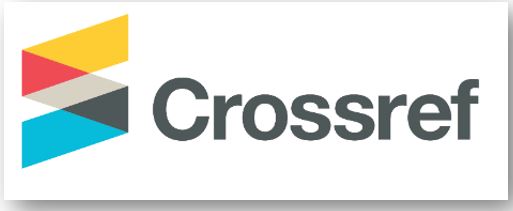Kesetaraan Gender Dalam Pendidikan Islam Perspektif Muhammad Sa’id Ramadhan Al-Buthi
DOI:
https://doi.org/10.61231/jie.v2i2.269Keywords:
Gender Equality, Islamic Education, Aisyah, Muhammad Sa'id Ramadhan Al-Buthi.Abstract
The purpose of this study is to describe gender equality in the field of education proposed by Muhammad Sa'id Ramadhan Al-Buthi. The qualitative research method is a literature study that is primarily sourced from the book Aisyah Ummul Mu'minin Ayyamuha Wa Siratuha Al-Kamilah Fi Shafahat. The results of this study indicate that gender equality in Islamic education according to Sheikh Buthi: First, the treatment of the Prophet Muhammad towards his wife. Second, the level of Aisyah's knowledge in this book can be seen in several fields of knowledge that Aisyah mastered. Third, Aisyah's role for women is to revive the women's assembly with her activities providing education for women. Fourth, Aisyah's sincerity is proven by the various worships she performed, including fasting for a whole year and spending most of her wealth
References
Abidin, J. Z., Huriani, Y., & Zulaiha, E. (2023). Perempuan Berdaya: Memperkuat Peran Perempuan dalam Budaya Tradisional. Socio Politica?: Jurnal Ilmiah Jurusan Sosiologi, 13(2), Article 2. https://doi.org/10.15575/socio-politica.v13i2.26847
al-Buthi, M. S. R. (1996). Al-Mar’ah bayna Tughyan an-Nizham al-Gharbiy wa Latha’if at Tasyri’ ar-Rabbaniy. Dar al-Fikr.
al-Buthi, M. S. R. (2022). Aisyah Ummul Mu’minin Ayyamuha Wa Siratuha Al-Kamilah Fi Shafahat (masturi & arif, Penerj.). ulama Nusantara & penerbit kalam.
Al-Mustadrak ala ash-Shahihain. (2021). Dalam Wikipedia bahasa Indonesia, ensiklopedia bebas. https://id.wikipedia.org/w/index.php?title=Al-Mustadrak_ala_ash-Shahihain&oldid=19336671
Al-Zarkasyi, B. (2001). Al-Ijabah Li Îrâdi mâ Istadrakthu ‘?isyah ‘Ala ash-Shahâbah. Maktabah al-Khanâji,.
Faesol, A. (2021). Perempuan dan Tasawwuf (Menakar Bias Gender dalam Kajian Sufisme). Jurnal Al-Hikmah, 19(01), 65–76. https://doi.org/10.35719/alhikmah.v19i01.45
Fanani, Z. (t.t.). Peran Publik Perempuan Dalam Pemikiran Mu?ammad Sa’?d Ramadl?n Al-B??i Perspektif Kesetaraan Gender.
Florentina, S., & Alimni. (2023). Aisyah Perempuan Pengukir Sejarah Pendidikan Pada Masa Rasulullah. JPT?: Jurnal Pendidikan Tematik, 4(2), Article 2.
Hadi, S. (2004). Metodologi research: Untuk penulisan laporan, skripsi, thesis dan disertasi. Andi.
Hayuningtyas, M. A., Maulani, M., & Kaina, L. (2022). Peran Perempuan dalam Penyebaran Tasawuf. Proceeding International Conference on Tradition and Religious Studies, 1(1), Article 1.
Izzuddin, A. (2012). Peran Sayyidah ‘Aisyah Dalam Pembentukan Hukum Islam Berwawasan Gender. Egalita, 0, Article 0. https://doi.org/10.18860/egalita.v0i0.2111
Kanafi, I. (2004). Kesetaraan Gender Dalam Spiritualitas Islam: Telaah Normatif Dan Historis Atas Pencapaian Posisi Perempuan Sufi Dalam Tasawuf. Jurnal Penelitian, 1, 23–44.
Khairani, I. (2022, Maret 29). Sudahkah Pendidikan di Indonesia Menjangkau Semua? Keadilan dan Kesetaraan Gender - Mubadalah. https://mubadalah.id/sudahkah-pendidikan-di-indonesia-menjangkau-semua/
Khotimah. (2023, April 17). Pentingnya Pendidikan untuk Perempuan dan Masa Depan Peradaban Manusia. Keadilan dan Kesetaraan Gender - Mubadalah. https://mubadalah.id/pentingnya-pendidikan-untuk-perempuan-dan-masa-depan-peradaban-manusia/
Mahfud, M. (2018). Living Hadis: Sebuah Kajian Epistemologis. dalam Jurnal Fikroh, 11. https://scholar.google.com/scholar?cluster=14703649607426241862&hl=en&oi=scholarr
Nazir, M. (1988). Metode Penelitian. Ghalia Indonesia.
Pendidikan. (2023). Dalam Wikipedia bahasa Indonesia, ensiklopedia bebas. https://id.wikipedia.org/w/index.php?title=Pendidikan&oldid=24049610#cite_note-1
Problem Gender dalam Perspektif Sufisme. (2019, Desember 11). Kalimahsawa.ID. https://kalimahsawa.id/problem-gender-dalam-perspektif-sufisme/
Rahmawati, K., & Muchtar, N. E. P. (2023). Aisyah Binti Abu Bakar Inspirasi Bagi Aktivis Perjuangkan Kesetaraan Gender Dan Inklusi Sosial PEREMPUAN. Studia Religia?: Jurnal Pemikiran dan Pendidikan Islam, 7(2), Article 2. https://doi.org/10.30651/sr.v7i2.20551
Rochimah. (2023). Peran Ilmiah ‘?isyah Binti Abu Bakr: Studi Kritik Muhammad Sa’id Ramadan Al-Buti Dalam ‘A
Shihab, M. Q. (2018). Perempuan. Lentera Hati.
Sugiyono. (2014). Metode penelitian kuantitatif kualitatif dan R & D. Alfabeta.
Sunan Ibnu Majah. (2023). Dalam Wikipedia bahasa Indonesia, ensiklopedia bebas. https://id.wikipedia.org/w/index.php?title=Sunan_Ibnu_Majah&oldid=23505911
Wahdini, M. (2020). POLITIK MODERAT: Studi Pemikiran Muhammad Sa’id Ramadhan al-Buthi. Jurnal Sosiologi Agama, 14(1), Article 1. https://doi.org/10.14421/jsa.2020.141-04
Wanita Inspiratif – Asrama Mahasiswa Unires UMY. (t.t.). Diambil 25 Januari 2024, dari https://unires.umy.ac.id/2020/01/02/wanita-inspiratif/
Downloads
Published
How to Cite
Issue
Section
License
Copyright (c) 2024 Aminatus Sholihah, Muhammad Mahfud, Muhammad Ariffudin

This work is licensed under a Creative Commons Attribution 4.0 International License.
You are free to:
- Share — copy and redistribute the material in any medium or format for any purpose, even commercially.
- Adapt — remix, transform, and build upon the material for any purpose, even commercially.
- The licensor cannot revoke these freedoms as long as you follow the license terms.
Under the following terms:
- Attribution — You must give appropriate credit , provide a link to the license, and indicate if changes were made . You may do so in any reasonable manner, but not in any way that suggests the licensor endorses you or your use.
- No additional restrictions — You may not apply legal terms or technological measures that legally restrict others from doing anything the license permits.
Notices:
You do not have to comply with the license for elements of the material in the public domain or where your use is permitted by an applicable exception or limitation .
No warranties are given. The license may not give you all of the permissions necessary for your intended use. For example, other rights such as publicity, privacy, or moral rights may limit how you use the material.

















